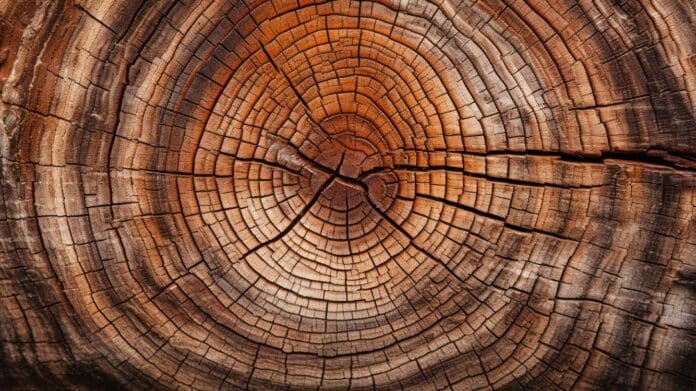The Carrington Event of 1859 was the most intense geomagnetic storm in recorded history. It plays a crucial role in shedding light on the frequency and impacts of the past and future Solar Energetic Particle (SEP) events on human societies.
The University of Helsinki, Natural Resources Institute Finland, and the University of Oulu collaborated to find evidence in tree rings for the first time of an increase in radiocarbon concentrations after the Carrington storm. Traces of radiocarbon have previously only been found from much more powerful solar storms.
Geomagnetic storms are caused when mighty clouds of charged particles from the Sun collide with Earth’s magnetic field. Aurorae are stunning lights produced when storms propel solar particles towards Earth’s poles.
Through a unique process, some of these high-energy particles in the upper atmosphere can produce radiocarbon (14C), a unique form of carbon. Through photosynthesis, plants and the air we breathe eventually absorb this radiocarbon.
This radiocarbon provides scientists with a wealth of information. They take tiny bits of wood from the trees, each symbolizing a distinct growing year. These wood pieces are converted to pure carbon, and the amount of radiocarbon they contain is determined by means of a particle accelerator, a specialized apparatus.
These days, we’ve got the technology and satellites to analyze lesser solar storms. But we’ve had to think outside the box for larger ones, like the Carrington event. Examining the concentration of a particular carbon in tree rings is one method.
However, because they haven’t occurred recently, medium-sized storms like the Carrington event have allowed us to examine them just now. However, a recent study offers a method for determining the frequency of these powerful storms. This could improve our readiness for any solar threats in the future.
The data were interpreted using a numerical radiocarbon synthesis and transit model created by University of Oulu academics.
Postdoctoral Researcher Kseniia Golubenko from the University of Oulu said, “The dynamic atmospheric carbon transport model was specifically developed for describing geographical differences in the distribution of radiocarbon in the atmosphere.”
The difference in radiocarbon levels between trees from Lapland and those from lower latitudes was the most notable finding of the new study. This was initially measured at the Accelerator Laboratory at the University of Helsinki. They then verified their results by repeating the measurements at two additional labs.
This discovery is significant because it sheds light on how the atmosphere and carbon cycle functioned before humans began burning fossil fuels. Knowing this enables us to develop more accurate models of the movement of carbon in our surroundings.
Doctoral Researcher Joonas Uusitalo from the Laboratory of Chronology said, “It’s possible that the excess of radiocarbon caused by the solar flare was primarily transported to the lower atmosphere through northern regions, contrary to the general understanding of its movement.”
“It’s also possible that the cyclic change in the production of radiocarbon in the upper atmosphere caused by the variation in solar activity has resulted in the local differences on the ground level seen in our findings.”
“The dominant fraction of radiocarbon is produced by galactic cosmic rays from outside the solar system, even though powerful solar storms generate individual bursts of the isotope in the atmosphere. Cosmic rays, in turn, are weakened by solar wind, a continuous flux of particles originating in the Sun that fluctuates between stronger and weaker in 11-year cycles.”
Further studies are essential. Historical records show that significant geomagnetic storms also took place in 1730 and 1770, so their tracking will likely be in focus next.
Journal Reference:
- Joonas Uusitalo, Kseniia Golubenko, Laura Arppe, Nicolas Brehm, Thomas Hackman, Hisashi Hayakawa, Samuli Helama, Kenichiro Mizohata, Fusa Miyake, Harri Mäkinen, Pekka Nöjd, Eija Tanskanen, Fuyuki Tokanai, Eugene Rozanov, Lukas Wacker, Ilya Usoskin, Markku Oinonen. Transient Offset in 14C After the Carrington Event Recorded by Polar Tree Rings. AGU, 2024. DOI: 10.1029/2023GL106632
